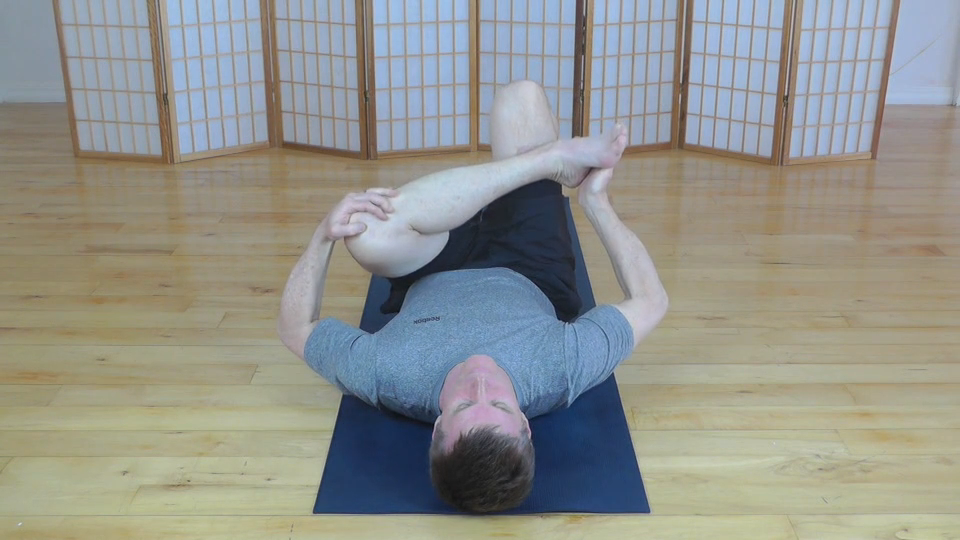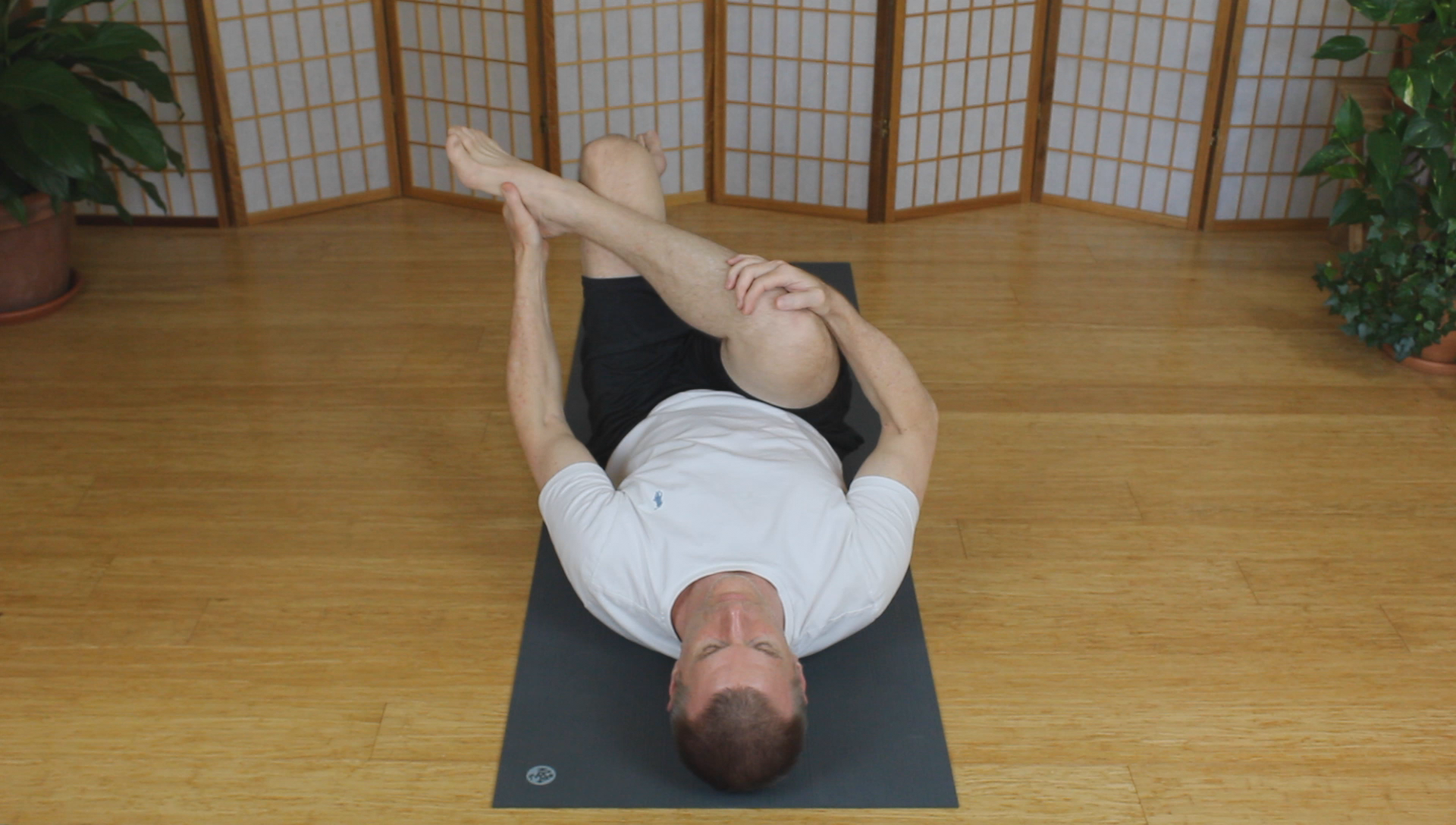Hip Stretches to Relieve Lower Back and Hip Pain
Why Are Hip Stretches so Important?
Hip stretches are essential for maintaining flexibility not only in the muscles of the hips but also the low back as well. Lack of movement in the hip joint will not only place stress on the joint, but also on the muscles of the lower back.
Also, tight hips can sap the body of energy. In walking, for example, if the hips cannot move freely and fluidly the body will expend much more energy than necessary because muscles have to work harder.

Hip stretching videos
The following videos include two supine hip stretching sequences and two seated options.
While the deepest stretches will likely be felt in the supine versions, the seated options are ideal if you are very tight and need a place to start, or if lying on the ground is not easy to do.
The seated versions are also ideal for when you're at the office and want to keep up with your flexibility throughout the day.
hip stretch | supine - part 1
hip stretch | supine - part 2
Stretching Blueprint for Pain Relief and Better Flexibility
|
Hip stretch | seated - Part 1
Hip stretch | seated - Part 2
Why Do My Hips Get So Tight?
When it comes to muscular compensation and lower back pain, the muscles of the hips are the chief stabilizer.
In other words, when we have lower back pain, the body is constantly attempting to figure out how to move without stressing the back further.
The frequent result is that the hip muscles - the gluteals, piriformis, deep hip rotators, hip flexors, and tensor fascia lata - can be forced to overwork in an effort to prevent movement in the lower back.
Over time, the hip muscles can then become chronically contracted. When this occurs they become their own problem. Chronic muscular contraction leads to ischemia (low blood flow), fatigue, and soreness.
This is why I recommend daily stretching to all my clients suffering from back pain. I even recommend it to those who aren't experiencing back pain because maintaining hip flexibility is a wonderful preventive medicine.
A strong muscle is a muscle which is flexible and resilient, not one which is short, tight, inflexible, and tired. Preventing lower back and hip pain begins with maintaining flexible, resilient muscles.
Hip stretches are essential in correcting pelvic torsion
The incidence of pelvic torsion is extremely high in the general population. Barely a day goes by when I don't see an individual suffering from the postural distortion pattern.
What I've found over the years is that hip stretches are an absolutely vital part of the correction process of pelvic torsion.
Sometimes performing assisted hip stretching is all that's required in order to correct pelvic torsion. But even when more is required, hip stretches are also part of the maintenance protocol I endorse.
Anatomy Images Courtesy of BIODIGITAL
Stephen O'Dwyer, cnmt
Neuromuscular Therapist & Pain Relief Researcher
FOUNDERLower Back Pain Answers |

|
CURRENT COURSES POSTURAL BLUEPRINT FOR CORRECTING PELVIC TORSION: The Complete Guide To Restoring Pelvic Balance (2022) STRETCHING BLUEPRINT FOR PAIN RELIEF & BETTER FLEXIBILITY: The Complete Guide to Pain-Free Muscles Using Active Isolated Stretching (2020) HEALING THE HIDDEN ROOT OF PAIN: Self-Treatment for Iliopsoas Syndrome (2013) FREE MINI COURSE: Introduction to Active Isolated Stretching |



